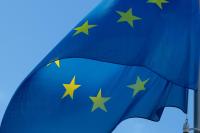These in-depth data stories, available on the JRC Indicators Explorer, provide insights and analysis on key topics related to governance, wellbeing, and sustainability.
A collection of these stories is showcased here, each summarised below and linked to the full article for further reading.

Despite progress in recent years, gender balance in political representation is yet to be achieved. The JRC Indicators Explorer provides an overview of different measures in one place, allowing for a holistic analysis of progress and setbacks.
EU countries progress slowly towards equal political representation in seven of them, women’s participation is above 40% in national parliaments. However, there are large cross-country differences and globally this share is below 30%.
This data exploration of different measures conducted together with Equal Measures 2030 provides insights women’s representation in politics from global to local level.

Italy’s performance in gender equality and political representation remains below the EU average across multiple dimensions.
JRC Indicators Explorer, including the Global Gender Gap Index and Global Equality Index, highlight persistent gaps in female labour market participation and Political Empowerment.
However, recent trends show progress, especially in parliamentary representation. A positive association is also observed between female advancement and governance quality, as measured by the European Regional Quality of Government Index.
Click to read the full article (in Italian) and explore the data behind Italy's progress towards achieving gender parity.

Belgium’s multicultural identity and social focus make it a model in health, education, and wellbeing.
According to composite indicators and scoreboards, the country performs well in the Global Health Security Index and invests significantly in universal healthcare.
It also ranks among the EU’s top performers in the European Innovation Scoreboard, thanks to strong education and R&D systems.
High scores in the Global Talent Competitiveness Index and World Happiness Report reflect Belgium’s ability to attract skilled professionals and foster life satisfaction.
These achievements were central to the Belgian EU Presidency’s focus on strengthening the Union’s social and health agenda.
Click to read the full article and explore the data behind Belgium's success in achieving good health and wellbeing, quality education, and overall

Sweden ranks among the top five countries in 52 of the nearly 150 indices included in the JRC Indicators Explorer, reflecting its strong performance in key governance and well-being areas.
It leads the Gender Equality Index and holds the top spot globally in the Gender Social Norms Index, highlighting its commitment to equality. Sweden also performs exceptionally well in the European Quality of Government Index and the Sustainable Governance Indicators, thanks to strong institutions and democratic traditions.
Additionally, its high ranking in the Legatum Prosperity Index and Ocean Health Index reflects Sweden’s strengths in social cohesion and environmental sustainability.
Click to read the full article and explore the data behind these indicators, gaining a deeper understanding of the interplay between governance, equality, and prosperity.

More than 50 years after concerns were raised about the limitations of GDP, the JRC Indicators Explorer offer alternative ways to measure progress more holistically.
Unlike GDP, these indicators capture key aspects of wellbeing, sustainability, and social development, drawing on multidimensional indices such as the Human Development Index (HDI), and the Legatum Prosperity Index.
Together, they help highlight both the Ecological Footprint of nations and their efforts toward a more inclusive and sustainable future.

Combining green and social transitions is essential to achieving sustainable wellbeing.
While green policies offer opportunities for climate action and job creation, they may also deepen inequalities if not managed fairly.
The Transitions Performance Index (TPI) evaluates countries’ progress across four areas: economic, social, environmental, and governance, while the Social Progress Index (SPI) measures social outcomes beyond economics.
The SDG Index highlights challenges, especially in SDG 12 and SDG 13, where environmental goals often conflict with socio-economic progress. However, countries like Portugal and Costa Rica show that balancing both transitions is possible.
Click to read the full article and explore the data behind these indicators.

Multidimensional indicators are increasingly used in EU policymaking to assess progress on complex issues beyond GDP.
The Social Scoreboard, European Innovation Scoreboard, and Human Development Index are among the most cited tools in EU legal documents and country reports.
The JRC Indicators Explorer currently hosts over 150 such measures, offering a broad perspective on policy performance.
Other indices, like the World Press Freedom Index, Environmental Performance Index, Global Innovation Index, Regional Competitiveness Index, and Regional Innovation Scoreboard, contribute additional context and benchmarking value for monitoring sustainability, innovation, and governance across Member States.
Click to read the full article and explore the data behind these indices.

The Gender Equality Regional Monitor, available via the Composite Indicators & Scoreboards website, measures gender equality across EU regions through indicators like the Female Achievement Index.
Analysis shows that regions with higher female achievement scores tend to also perform well in governance, innovation, and wellbeing.
These patterns are confirmed by strong correlations with the European Regional Quality of Government Index, Regional Innovation Scoreboard, and European Regional Social Progress Index, highlighting how gender equality supports wider societal progress.
Click to read the full article and explore the data behind these indicators.
| Originally Published | Last Updated | 08 Apr 2025 | 16 May 2025 |
| Knowledge service | Metadata | Composite Indicators |
